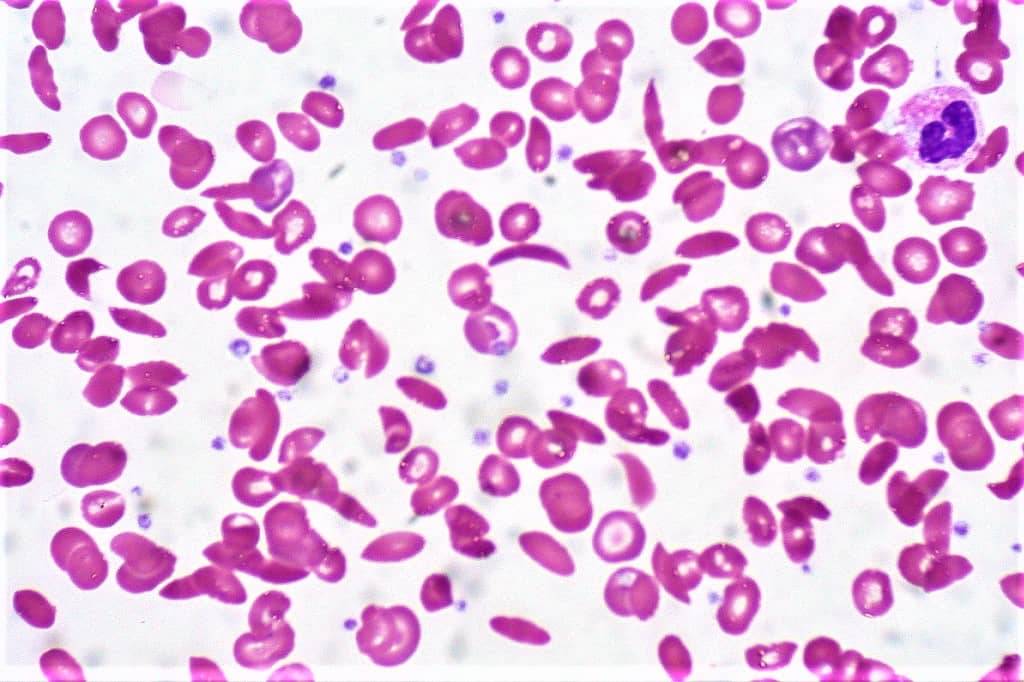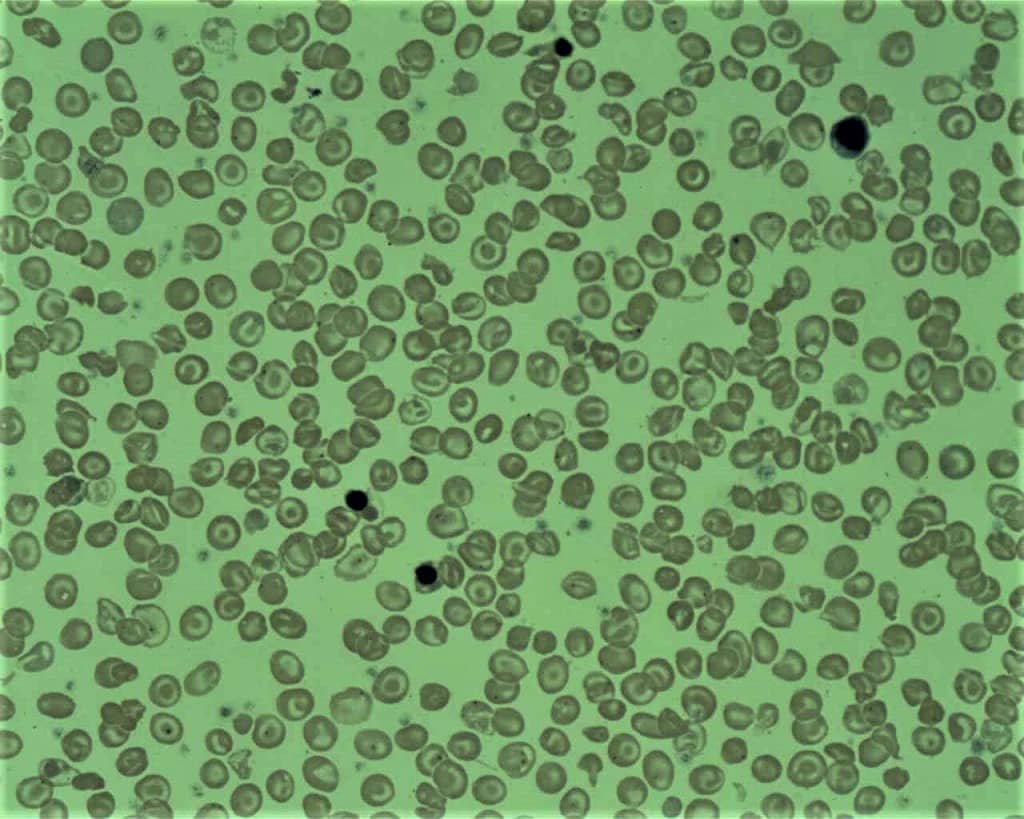Red cell indices comprise the parameters that reveal the hemoglobin content and physical characteristics of the Red blood cells.
The Red cell indices are a part of Complete Blood Count (CBC), which reveals the complete status of various components of the blood in the individual’s body.
Let’s briefly learn about the Red blood cells and then we’ll proceed for the parameters of Red Cell Indices
- Normal Count of Red blood cells:
- In Males – 4.8-5.5 million/mm3
- In Females – 4.5-5 million/mm3
- The shape of Red blood cells: RBC’s are biconcave discs, this shape helps in rendering the red cells quite flexible so that they can easily pass through capillaries.
- Size of Red Blood Cells: 7.2 µm.

- The nucleus of Red blood cells –Erythrocytes are non-nucleated cells
- The pigment in Red Blood Cells: Iron-containing pigment – Hemoglobin is present – helps in the transport of oxygen from the lungs to tissues and carbon dioxide from tissues back to the lungs.
- The lifespan of Red blood cells –120 days.
Red cell indices include 3 tests – Mean Cell Volume (MCV), Mean Cell Hemoglobin (MCH), and Mean Cell Hemoglobin Concentration (MCHC). They are also called the “Absolute values” for Red Blood Cells.
The Values of MCV, MCH, and MCHC are derived from the values of Hemoglobin, Packed Cell Volume (PCV) or Hematocrit and Red Cell Count.
Check out the best online blood test in California
MEAN CELL VOLUME (MCV)
The mean cell volume (MCV) is the measurement of the average size of the red blood cells. The MCV Can be calculated from the values of Packed Cell Volume (in %) and the Total Red Blood Cell Count (in million/mm3) as follows:
MCV = PCV (in %) × 10 / Red Cell Count (in million/mm3)
MCV is expressed in Femtoliters or fl (10-15 of a liter)
Normal Range of MCV = 80 – 96 fl (varies as per the population served by laboratories)
On the basis of MCV, Red cells are classified as follows:
Increased MCV – Macrocytes (Macrocytic)
Normal MCV – Normocytes (Normocytic)
Decreased MCV – Microcytes (Microcytic)
Causes Of Increased MCV – Megaloblastic Anemia, Chronic Alcoholism, Liver Disease, Normal Pregnancy, Reticulocytosis, In Newborns, etc.
Causes Of Decreased MCV – Iron deficiency anemia, Thalassemia, Hemolytic Anemia etc.

Before proceeding to the other parameters of Red Cell indices that is MCH and MCHC, let’s briefly learn about hemoglobin
Hemoglobin (Hb or Hgb) is a red color pigment present in red blood cells (RBCs) comprises Fe2+ and Globin protein. It is Hemoglobin in RBCs that carries the oxygen from the lungs to the tissues and CO2 from body tissues to the lungs for excretion.
Hemoglobin (Hb or Hgb) is responsible for the appearance of Red color RBCs and blood. Hemoglobin is a chromoprotein consisting of Globin molecule attached to 4 red colored Heme molecules. Hemoglobin synthesis requires the coordinated production of Heme and Globin. Heme is a prosthetic group that medicates reversible binding of oxygen by hemoglobin. Globin is the protein that surrounds and protects the Heme molecule.

The Estimation of hemoglobin is usually advised with the Red Cell indices to reveal the various physiological and pathological conditions and as a both diagnostic and prognostic test especially in case of suspected Anemia which can be caused by various factors for e.g. – Iron deficiency, Hemolysis of Red cells in excess, Vitamin B12 deficiency, Folic acid deficiency, Thalassemia, etc.
Check out the estimation of hemoglobin by Sahli’s method
MEAN CELL HEMOGLOBIN (MCH)
Mean Cell Hemoglobin (MCH) is the average amount of hemoglobin in a single red blood cell. The value of MCH can be calculated from the values of Hemoglobin (in gm/dl) and Total Red cell Count (in million/mm3) as follows:
MCH = Hemoglobin (in gram/dl) × 10/ Red Cell Count (in million/mm3)
The amount of Hemoglobin is very low so it is expressed in picogram or pg (10-12 grams)
Normal Range of MCH – 27 – 32 pg
Causes Of Increased MCH – liver diseases, hyperactive thyroid, Chronic Alcoholism, Vitamin B12 and Folate deficiency, complications from an infection, In Newborns, etc.
Causes Of Decreased MCH – Iron Deficiency Anemia, Thalassemia, Folate deficiency, Vitamin B12 deficiency, Celiac disease, Gastric surgery, etc.

MEAN CELL HEMOGLOBIN CONCENTRATION (MCHC)
The Mean Cell Hemoglobin Concentration refers to the concentration of hemoglobin in 1 deciliter or 1 liter of packed red blood cells. The MCHC can be calculated by the Hemoglobin content (in grams/dl) and the Packed Cell Volume (in %).
MCHC = Hemoglobin (in gram/dl) × 100 / Packed Cell Volume (in %)
Normal Range of MCHC – 30 – 35 grams/dl
Causes of Increased MCHC – Hereditary Spherocytosis, Autoimmune hemolytic anemia, Systemic Lupus Erythematosus, Lymphoma, etc.

Causes of Decreased MCHC – Iron deficiency anemia, Sideroblastic anemia, etc.

On the basis of MCH and MCHC values, the Hemoglobin content of red cells is described as:
Increased MCHC – Hyperchromic
Normal MCHC – Normochromic
Decreased MCHC – Hypochromic
USES OF RED CELL INDICES
Red Cell indices are mainly used to Classify the type of anemia as the complete picture of Red blood cells via red cell indices reveals the variation in Size and Hemoglobin content of RBCs and helps the pathologist to classify the type of anemia.
Morphologically, based on the values of Red cell indices, Anemia is classified into three main types as
Normocytic-Normochromic Anemia – In this type of anemia, RBCs are normal in size and color but reduced in number. The values of MCV, MCH, and MCHC are in the normal range but reduced PCV. This type of anemia is commonly found in Acute blood loss, Aplastic anemia, Sickle Cell Anemia and in Chronic diseases, etc.

Microcytic Hypochromic Anemia – As the name suggests, in this type of anemia the red cells are small in size and pale-colored, characterized by decreased red cell count, Hb and PCV values. The MCV, MCH, and MCHC values are also reduced. It is commonly observed in Iron & Folate deficiency and Thalassemia.

Macrocytic Normochromic Anemia – In this type of Anemia the size of the Red blood cells is increased with normal color and no central pale portion. RBCs are reduced in number with low hemoglobin content with high MCV and MCH values and the normal MCHC value. It is commonly observed in Pernicious anemia, Folic acid, and Vitamin B12 deficiency and in Aplastic anemia.
The Red Cell Indices also helps in the Differentiation of Iron deficiency anemia from the Thalassemia trait as, In Iron deficiency, the MCV, MCH, and MCHC are low whereas in case of Thalassemia trait, MCV and MCH are low and the MCHC is Normal.

Hi, I’m the Founder and Developer of Paramedics World, a blog truly devoted to Paramedics. I am a Medical Lab Tech, a Web Developer and Bibliophiliac. My greatest hobby is to teach and motivate other peoples to do whatever they wanna do in life.
NYC bt plz next time mention in, the RBC length n diameter b’coz some people don’t know the RBC ‘s diameter.
Thanks, the ideal Diameter of the RBCs is already mentioned there which is 7.2 microns.
Thanks, it’s quite informative
It is very helpfull for medical students.
Biochemistry ka chapter upload kare sir
Will Upload Soon….
its very helpful thanks a lot, plz mention any subjects that directly related to the lab procedures & blood transfusion
Quite helpful
Thanks 🙂
Sir , please explain RDW-CV & RDW-SD, ans it’s relation with hemoglobin and RBC
Thanks for full information giving about this topic!!